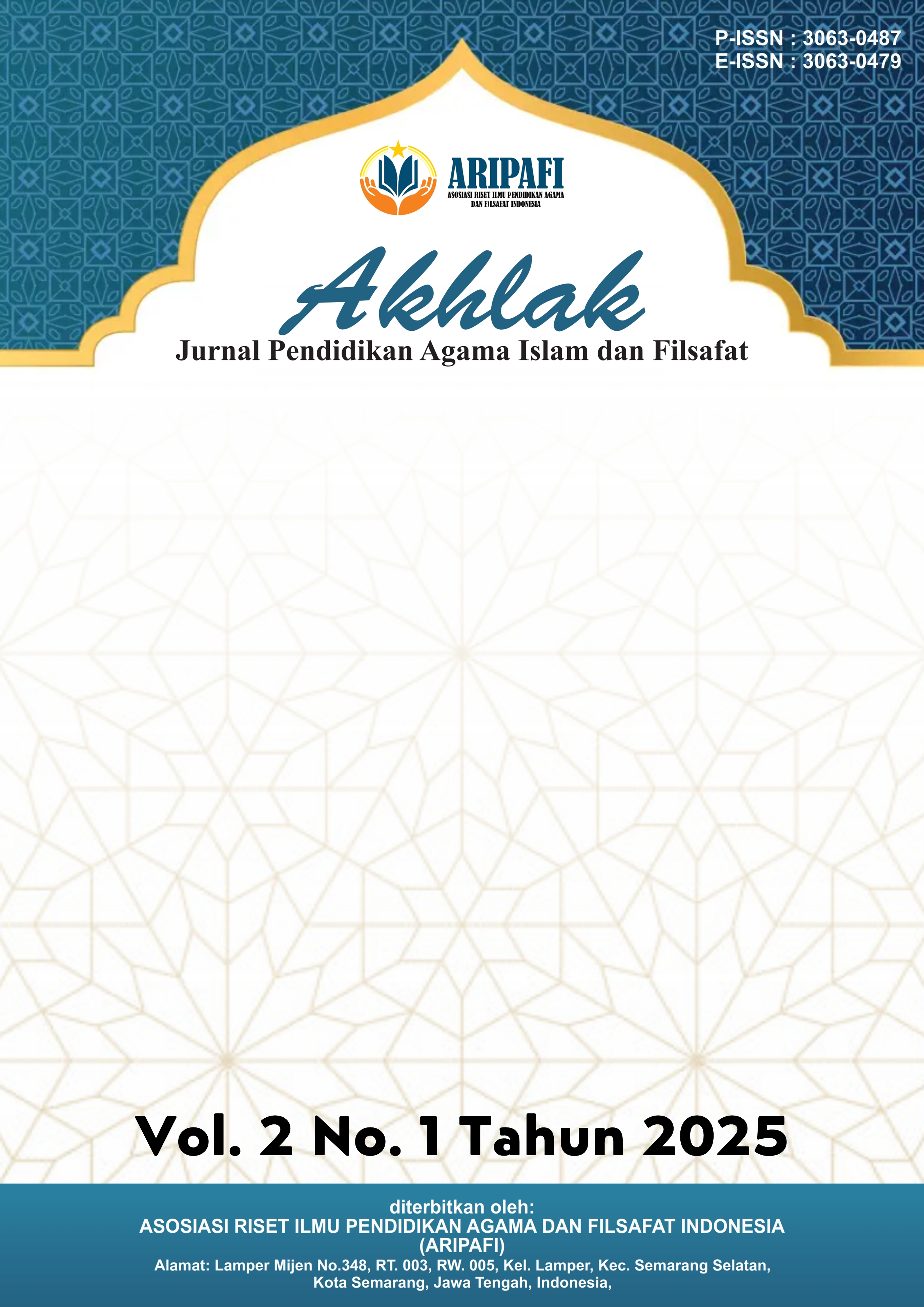Penafsiran Ayat Tentang Berpakaian (Berhias)
DOI:
https://doi.org/10.61132/akhlak.v2i1.388Keywords:
Dress Ethics, Private Parts, Modesty, Pious Clothing, Morality, IslamAbstract
This study discusses the concept of dress ethics in Islam, focusing on the dress code for both men and women as well as the ethics that should be applied when dressing. In Islam, dressing is not merely a matter of appearance, but also related to religious teachings that emphasize the importance of covering the aurat, maintaining modesty, and preserving honor. For men, the dress code is strictly regulated by Sharia, including the aurat limitation between the navel and the knee, the prohibition of wearing gold and silk, and the prohibition of imitating women's or non-Muslims' clothing. Meanwhile, for women, the dress code is more complex with specific requirements such as covering the aurat, wearing non-transparent clothing, not accentuating body contours, and avoiding imitation of men's or non-Muslim clothing. This study also highlights the concept of tabarruj, which refers to the act of displaying jewelry and beauty to men who are not mahram, considered a violation of Islamic dress ethics. Additionally, this research explains the meaning of jilbab in the Qur'an, which is understood as an outer garment that covers the entire body, serving as protection and a means of distinguishing believing women. Overall, dress ethics in Islam encompasses not only physical aspects but also spiritual ones, reflecting devotion to Allah through sincere intentions in accordance with religious teachings. This study provides a deeper understanding of the significance of dress ethics as part of a Muslim's identity in faith.
References
Akhyar, M., Batubara, J., & Deliani, N. (2023). STUDI ANALISIS KEMITRAAN ORANG TUA DAN SEKOLAH DALAM MENINGKATKAN KEDISIPLINAN SISWA. Fikrah: Journal of Islamic Education, 8(1), 1–16.
Akhyar, M., Batubara, J., & Deliani, N. (2024). The central role of the Quran in the development of the Islamic educational paradigm. FOKUS Jurnal Kajian Keislaman Dan Kemasyarakatan, 9(1), 25–38.
Akhyar, M., & Samad, D. (2024). STUDI ANALISIS TAFSIR AL-QUR’AN DAN RELEVANSINYA DALAM PENDIDIKAN ISLAM. INOVATIF: Jurnal Penelitian Pendidikan, Agama, Dan Kebudayaan, 10(1), 38–57.
Anshori, I. (2023). Penafsiran Ayat-Ayat Tabarruj dalam Al-Qur’an Menurut Buya Hamka (Studi Kitab Tafsir Al-Azhar). Universitas Muhammadiyah Surakarta.
Faruqi, A., & Maghfirah, L. (2020). Etika Berhias Bagi Wanita Menurut Al-Qurâ€TM an Surat Al-Ahzab Ayat: 33. Jurnal Ilmu Al-Qur’aFaruqi, A., & Maghfirah, L. (2020). Etika Berhias Bagi Wanita Menurut Al-Qurâ€TM an Surat Al-Ahzab Ayat: 33. Jurnal Ilmu Al-Qur’an Dan Tafsir Nurul Islam Sumenep, 5(1), 130–174.n Dan Tafsir Nurul Islam Sumenep, 5(1), 130–174.
Khasanah, M. (2021). Adab Berhias Muslimah Perspektif Ma’nā-Cum-Maghzā Tentang Tabarruj Dalam QS Al-Ahzab 33. Al-Adabiya: Jurnal Kebudayaan Dan Keagamaan, 16(2), 171–184.
Maswati, M. (2022). Adab Berpakaian Muslimah dalam Perspektif Al-Qur’an (Studi Perbandingan Tafsīr Fi Ẓilālil Qur’ān Karya Sayyid Quṭb dan Tafsir Al-Jami’u Li Ahkāmil Qur’ān Karya Imām Al-Qurṭubī). UIN Sultan Maulana Hasanuddin Banten.
Murni, D., & Asparul, H. (2021). Penafsiran Ayat Al-Libảs Dalam Tafsir Kontemporer. SYAHADAH: Jurnal Ilmu Al-Qur’an Dan Keislaman, 9(2), 15–27.
Pertiwi, N. F. H. (2015). Nilai-nilai pendidikan akhlak yang terkandung dalam surah Al-A’raf Ayat 31-33. IAIN Padangsidimpuan.
Shopa, S. N. (2019). Tradisi berhias bagi wanita pada perspektif al-Qur’an: Studi komparatif tafsir fi zhilal al-qur’an dengan tafsir ibnu katsir pada surat al-ahzab ayat 33. UIN Sunan Gunung Djati Bandung.
Tamimi, I. M. (2022). Adab Berhias Perempuan Menurut Al-Qur’an (Kajian Tafsir Tematik). IAIN KUDUS.
Umar, M. H., & Yusra, A. (2020). Perspektif Islam Tentang Tabarruj dalam Penafsiran Para Ulama. Jurnal Literasiologi, 3(4).
Wati, M. (2018). Pemahaman Ayat-Ayat Tentang Tabarruj (Studi Pendekatan Tematik). IAIN Curup.






